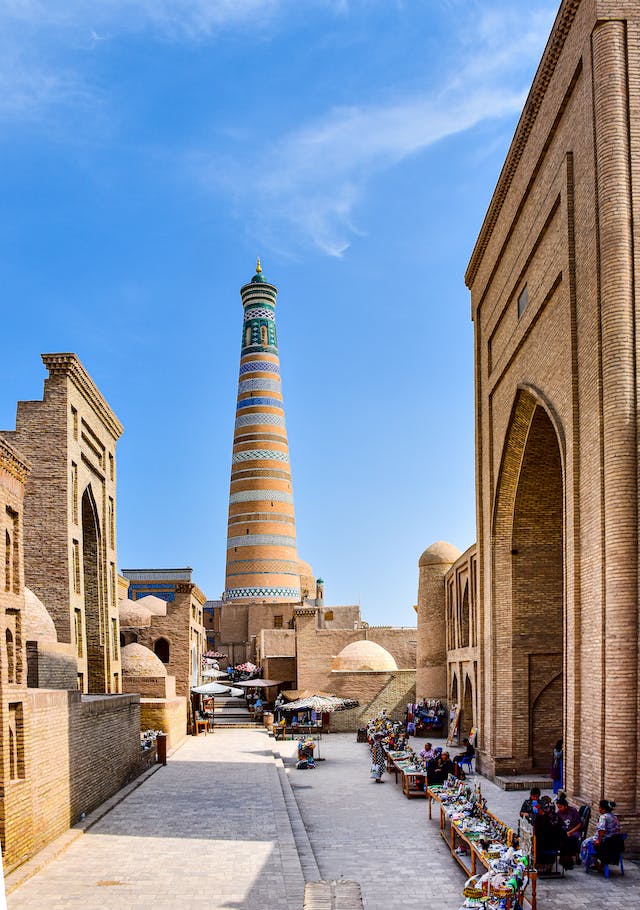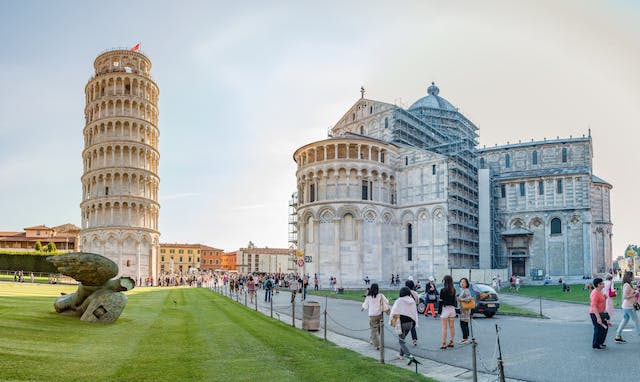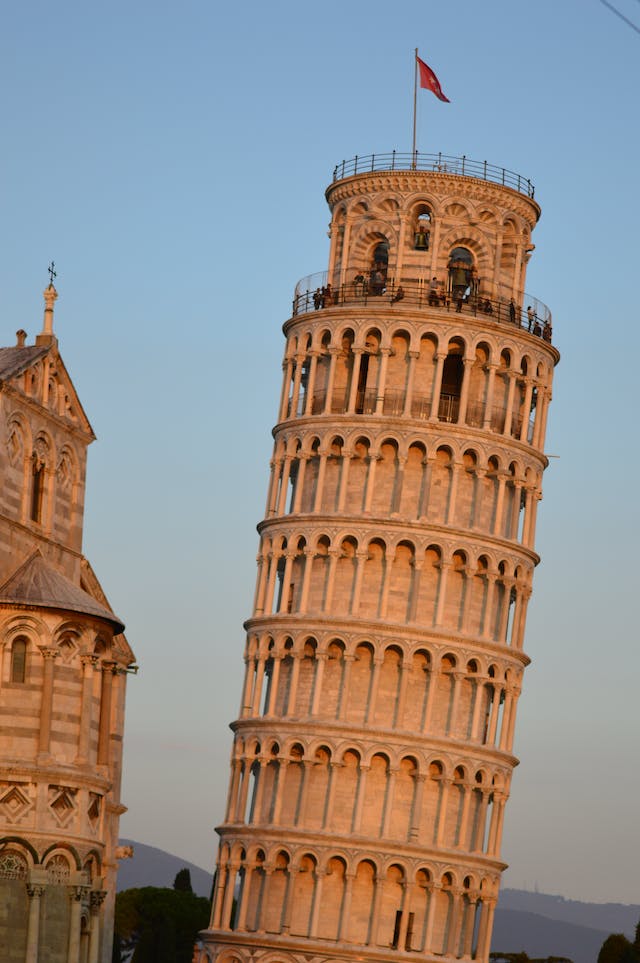San Antonio’s Historic Missions: Architectural Wonders
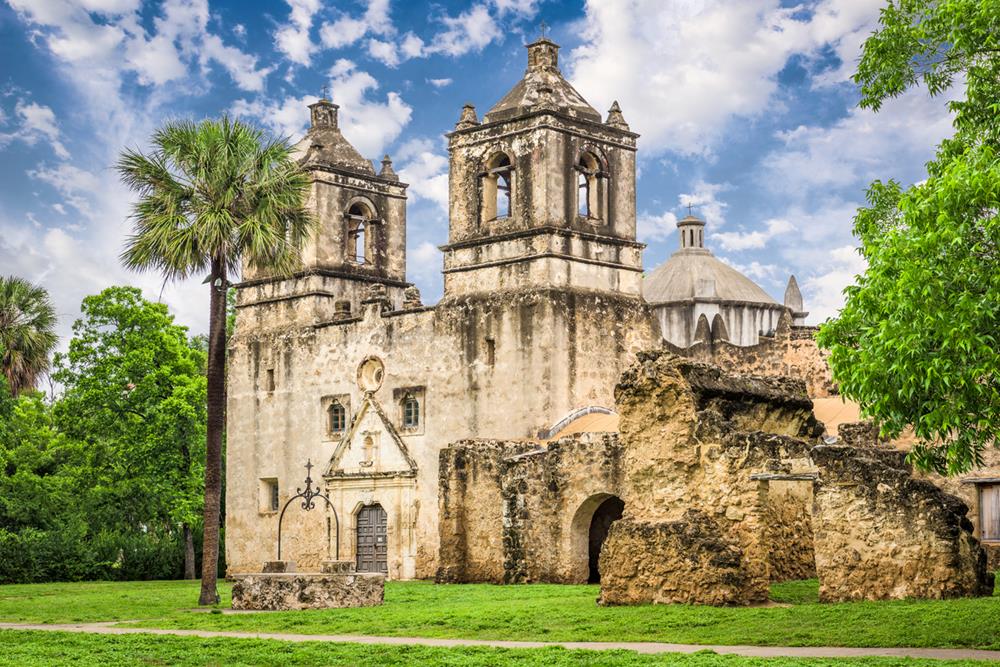
San Antonio's five historic missions blend Spanish Colonial architecture with Indigenous craftsmanship, creating unique frontier complexes. You'll find ornate façades, cruciform churches with symbolic elements, and innovative water systems including the Espada Aqueduct, often cited as the oldest Spanish aqueduct in the United States.
These UNESCO World Heritage sites also showcase defensive features—thick walls and strategic siting along the San Antonio River. Each mission offers distinct artistic treasures like preserved frescoes that reveal the cultural fusion of European and Native traditions.
Spanish Colonial Meets Indigenous Design: The Unique Blend of Mission Architecture
https://www.youtube.com/watch?v=YtSCuytfEsA
Harmony defines the architectural legacy of San Antonio's historic missions, where Spanish Colonial design principles merged with Indigenous craftsmanship to create something distinctive. You'll notice the blend of Late Baroque, Moorish, Renaissance, and Romanesque influences in these remarkable structures.
The missions' intricate stonework, like the famous Rose Window at Mission San José, showcases ornate Spanish Colonial style while incorporating naturalistic motifs. These weren't just places of worship—they were centers of cultural exchange where European and Coahuiltecan traditions intertwined.
Built primarily with local limestone (with adobe used in some ancillary structures), the missions adapted Iberian forms to available resources. Their defensive compound layouts with enclosed courtyards reflect practical concerns and support agriculture through acequia irrigation systems that blended European engineering with local environmental knowledge.
The complexes were intentionally planned with residences and gates forming protective enclosures against potential threats.
Sacred Spaces: The Churches and Their Symbolic Elements
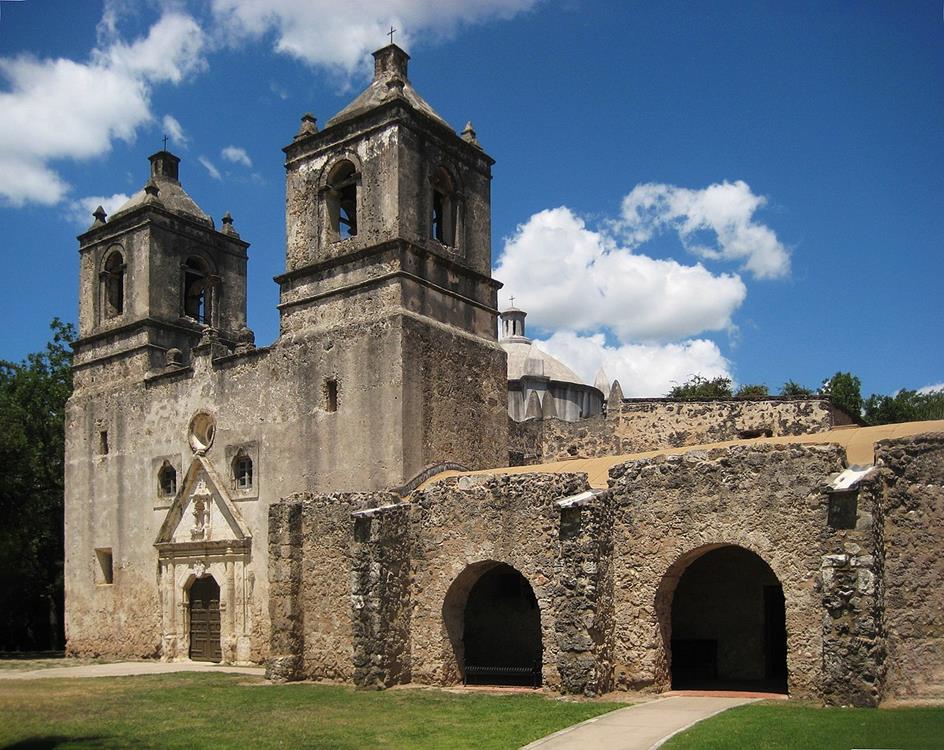
While visitors often marvel at imposing exteriors, it's within the mission churches that you'll discover profound symbolic expressions of faith and cultural fusion. You'll find altars oriented to capture morning light, surrounded by ornamentation that blends Spanish Catholic imagery with Indigenous design.
The churches' cruciform plans embody Christian theology, while carefully placed windows illuminate altars to suggest divine presence. Ritual symbolism extends through every element—from baptismal fonts to bell towers that once called communities to worship.
Mission Concepción stands as a remarkable example, its central dome soaring above the nave. Sacred geometry appears in arches and vaults that evoke heaven's protection.
These spaces remain vibrant centers of community life today, where centuries-old traditions continue through sacraments and feast days, connecting modern worshippers to the practices of earlier generations.
Defensive Structures and Strategic Layout of the Mission Complexes
Beyond their spiritual significance, the San Antonio missions also functioned as fortified communities in a frontier region often marked by conflict. Rather than being miles apart from one another, the five missions were clustered within roughly seven miles along the San Antonio River, forming a corridor that balanced agriculture with defensive preparedness.
Layouts featured quarters and gates forming protective quadrangles. Thick masonry walls, corner bastions at some sites, and narrow openings minimized vulnerability while maintaining daily functionality.
Upper-level rooms and vantage points aided surveillance of the grounds, and the complexes could shelter residents during hostile events. This careful integration of defense with daily mission life helped these communities endure frontier challenges while protecting people and production.
Water Management Marvels: Aqueducts and Irrigation Systems
View this post on Instagram
The missions' waterworks stand as remarkable engineering achievements of colonial Spanish America. As you explore, you'll encounter the Espada Aqueduct (c. 1740s), which carries water over Piedras Creek on a stone structure about 150 feet long—an early American example of masonry aqueduct design.
The acequia network formed the backbone of the missions' economy. These gravity-fed channels, descending on the order of about 1–2 feet per mile, distributed water efficiently to fields before returning flow to the river—an early expression of sustainable resource management. The linked ditches extended several miles, providing water for crops and daily use.
The Espada Dam, a surviving Spanish-era diversion, still functions today, feeding acequias that once sustained crops and livestock essential to mission life.
Artistic Legacy: Frescoes and Decorative Elements That Tell Stories
Beneath centuries of weathering, vibrant frescoes adorn mission walls—among the most compelling artistic legacies of Spain's colonial period. Conservation work has identified mineral pigments bound to lime plaster (sometimes with casein-type binders), yielding colors that remain visible after 250 years.
At Mission Concepción, collaborations between Spanish and Indigenous artisans blended Catholic symbolism with Native visual traditions. An emblematic "Eye of Providence" motif has been reinterpreted as restoration revealed additional painted details. These artistic elements beautified sacred spaces and sometimes cleverly masked construction seams.
- Visit Mission Concepción's church for some of the best-preserved examples.
- Look for traces of original red earth pigments on exterior façades.
- Notice floral motifs and geometric borders that reflect local knowledge adapted to European techniques.
The Five Missions: Architectural Distinctions Along the San Antonio River
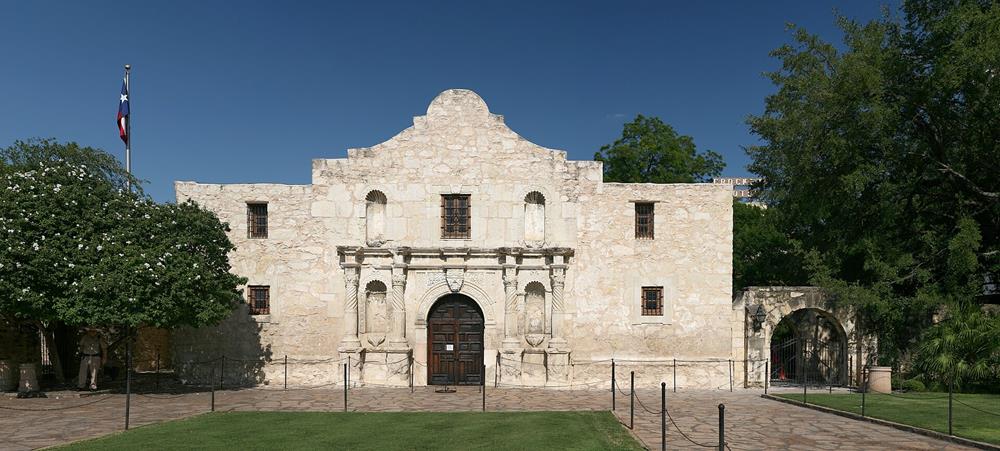
Spanning a roughly seven-mile stretch, five distinct missions present shared heritage with individual character.
The Alamo (Mission San Antonio de Valero) pairs rugged limestone construction with later historical layers; Mission Concepción bears a formal, Romanesque-influenced massing with a dome and barrel vaults. Mission San José, the "Queen of the Missions," features elaborate ornamentation, including the Rose Window. Mission San Juan Capistrano emphasizes modest, functional design that supported orchards, fields, and workshops. Mission Espada distinguishes itself with Moorish-inspired horseshoe arches and its sophisticated aqueduct.
Each mission functioned as a center for social integration, with architecture supporting both religious life and daily work through well-planned plazas, churches, residences, and agricultural facilities. These fortified communities were designed as largely self-sufficient complexes involving Indigenous Coahuiltecans within the Spanish colonial system.
Preservation Challenges and Triumphs in Maintaining Historical Authenticity
Despite achieving UNESCO World Heritage status in 2015, San Antonio's missions face ongoing preservation challenges that can threaten architectural integrity and cultural significance. A multi-million-dollar maintenance need means careful choices between accessibility and conservation. When you visit, you may notice:
- Authentic preservation requiring specialized craftsmanship—custom lime plasters, mortars, and hardware instead of off-the-shelf replacements.
- Visitor-flow restrictions to protect fragile finishes while still engaging the public.
- Funding trade-offs that can delay landscape work or staffing expansions. Stewardship demands balancing historic fabric with modern use, including periodic limewash applications on limestone masonry to shield walls from weather—techniques faithful to the original materials and methods.
Living Heritage: How Mission Architecture Continues to Shape San Antonio Today
Centuries after their founding, San Antonio's missions remain living parts of the city's cultural DNA. Mission-inspired elements—thick limestone walls, shaped bell towers, and sheltered courtyards—appear in contemporary architecture that merges heritage with sustainability.
The missions foster spiritual continuity through ongoing worship and anchor community life during festivals and cultural events. The Espada Acequia continues to flow, a working testament to early engineering.
UNESCO recognition elevates their role in tourism and neighborhood revitalization, while local architects incorporate mission motifs into modern designs using traditional materials. These architectural treasures keep educating residents and visitors about San Antonio's unique cultural identity.

